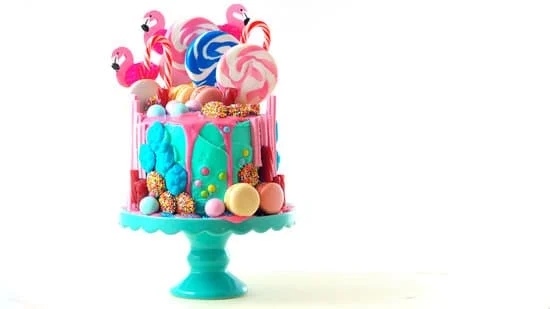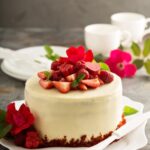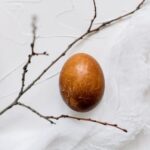Cake decorating with sugar is an art form that can truly elevate the appearance of any cake, turning a simple dessert into a stunning masterpiece. Whether you are a beginner or experienced baker, mastering the use of sugar in cake decoration can take your creations to the next level. From delicate sugar flowers to intricate designs, sugar can be molded and shaped into various decorations that add a touch of elegance and creativity to your cakes.
Using sugar for cake decorating opens up a world of possibilities, allowing you to unleash your creativity and personalize your cakes in unique ways. By understanding the different types of sugar suitable for decorating, acquiring the necessary tools, and following a step-by-step guide, you can create beautiful and eye-catching decorations that will impress your friends and family.
With some tips and tricks up your sleeve, you can perfect your sugar decorations and take your cake decorating skills to new heights.
In this article, we will delve into the art of cake decorating with sugar, exploring the various types of sugar used for decoration, the essential tools needed for creating stunning designs, and providing a detailed guide on how to make sugar decorations from scratch.
Whether you are looking to create elegant floral arrangements or whimsical designs, mastering the use of sugar in cake decorating is sure to enhance your baking skills and leave a lasting impression on those who indulge in your creations.
Understanding Different Types of Sugar for Cake Decorating
When it comes to cake decorating with sugar, understanding the different types of sugar available is crucial in achieving the desired results. Some of the most common types of sugar used in cake decorating include granulated sugar, powdered sugar (also known as confectioners’ sugar or icing sugar), sanding sugar, and fondant. Each type of sugar has its own unique characteristics and uses in decorating cakes.
Granulated sugar is the most commonly used type of sugar in baking and can be used to make simple syrup for brushing on cake layers or creating a crunchy topping for baked goods. Powdered sugar is often used to make frosting and icings due to its fine texture, which helps create a smooth finish.
Sanding sugar adds sparkle and crunch to decorations like cookies, while fondant is a versatile ingredient that can be rolled out to cover cakes or molded into intricate shapes.
In addition to these common types of sugar, there are specialty sugars like pearl sugar, crystalized sugar, and colored sugars that can add a pop of color and texture to your cake decorations. Experimenting with different types of sugars can lead to unique and creative designs that will impress your friends and family. Remember, each type of sugar has specific properties that can affect the overall look and taste of your decorated cakes.
| Type of Sugar | Common Use |
|---|---|
| Granulated Sugar | Making simple syrup, creating crunchy toppings |
| Powdered Sugar | Making frosting and icings for smooth finishes |
| Sanding Sugar | Adding sparkle and crunch to decorations like cookies |
Tools Needed for Cake Decorating With Sugar
Cake decorating with sugar requires specific tools to ensure that your creations turn out beautifully. One essential tool for sugar decorating is a silicone mat, which provides a non-stick surface for working with melted sugar.
This makes it easier to create intricate designs and decorations without worrying about the sugar sticking to the surface. Another important tool is a set of silicone molds, which are used to shape the melted sugar into various designs such as flowers, leaves, or geometric shapes.
Additionally, having a good quality pastry brush is crucial for applying edible colors to your sugar decorations. Whether you are using food coloring gels or dusts, a pastry brush allows you to add vibrant colors with precision.
Piping bags and tips are also indispensable tools for cake decorating with sugar, as they enable you to pipe melted sugar onto your cakes in intricate patterns and designs. These tools give you control over the flow of the melted sugar, allowing you to create detailed decorations.
Furthermore, a digital candy thermometer is essential when working with sugar for cake decorating. Different types of sugar require precise temperatures for melting and shaping, so having a candy thermometer ensures that you achieve the perfect consistency every time. By investing in these tools for cake decorating with sugar, you can elevate your creations and impress your friends and family with stunning desserts that look as professional as they taste.
| Tools | Function |
|---|---|
| Silicone Mat | Provides non-stick surface for working with melted sugar |
| Silicone Molds | Shapes melted sugar into various designs |
| Pastry Brush | Applies edible colors to sugar decorations with precision |
| Piping Bags and Tips | Pipe melted sugar onto cakes in intricate patterns |
Step-by-Step Guide to Creating Sugar Decorations for Cakes
Decorating cakes with sugar can take your creations to the next level, adding a touch of elegance and sophistication. Sugar decorations are not only visually appealing but also edible, making them a popular choice among bakers and cake decorators for their versatility and beauty. With the right techniques and tools, you can create stunning sugar decorations to adorn your cakes for any occasion.
To begin creating sugar decorations for cakes, you will need some essential tools. Here is a list of items you may need to get started:
- Granulated sugar
- Water
- Cooking thermometer
- Silicone molds or cookie cutters
- Parchment paper
- Gel food coloring (optional)
Once you have gathered all the necessary tools and ingredients, follow these steps to create beautiful sugar decorations for your cakes:
- Start by combining granulated sugar and water in a saucepan over low heat, stirring until the sugar dissolves.
- Bring the mixture to a boil without stirring, using a cooking thermometer to monitor the temperature. The mixture should reach about 300°F (150°C) for hard crack stage.
- Remove the saucepan from heat and let it cool slightly before pouring the sugar syrup into silicone molds or shaping it with cookie cutters on parchment paper. Allow the decorations to cool and harden before carefully removing them from the molds.
Creating sugar decorations for cakes may require some practice to perfect your technique, but with patience and creativity, you can achieve professional-looking results. Experiment with different shapes, colors, and designs to add a unique touch to your cake creations using this versatile cake decorating technique.
Tips and Tricks for Perfecting Sugar Decorations
When it comes to cake decorating with sugar, there are several tips and tricks that can help you perfect your skills and create stunning decorations for your cakes. Whether you’re a beginner or an experienced baker, these techniques can elevate your creations to the next level.
Choosing the Right Sugar
One important tip for perfecting sugar decorations is to choose the right type of sugar for your project. Different sugars, such as granulated sugar, powdered sugar, or specialty sugars like sanding sugar or pearl sugar, can all create unique effects on your cakes. Experimenting with different types of sugar can help you achieve the exact look you want for your cake.
Practice Piping Techniques
Another key aspect of perfecting sugar decorations is mastering piping techniques. Whether you’re using royal icing, buttercream, or fondant, practicing piping different shapes and designs can help you improve your precision and control. Invest in a variety of piping tips to create different textures and effects on your decorations.
Experiment With Color and Texture
Don’t be afraid to get creative when it comes to color and texture in your sugar decorations. Adding food coloring or edible dusts can give your decorations a vibrant pop of color, while incorporating different textures like glitter or sprinkles can add depth to your designs. Mixing and matching colors and textures can truly make your sugar decorations stand out on any cake.
Creative Ideas for Using Sugar in Cake Decorating
Sugar Sculptures
One creative idea for using sugar in cake decorating is to create sugar sculptures to adorn your cakes. Sugar can be molded and shaped into intricate designs such as flowers, butterflies, or even small figurines.
To make sugar sculptures, you will need a silicone mold, isomalt or sugar paste, food coloring, and a heat source to melt and shape the sugar. Once you have mastered the art of creating sugar sculptures, you can add an extra touch of elegance and sophistication to your cake designs.
Sugar Glass
Another interesting way to incorporate sugar into your cake decorating is by making edible sugar glass. Sugar glass can be used to create delicate and transparent elements on cakes, such as windows for a house-shaped cake or icicles for a winter wonderland-themed dessert.
To make sugar glass, you will need granulated sugar, corn syrup, water, and a candy thermometer. By mastering the technique of making sugar glass, you can elevate the visual appeal of your cakes and impress your guests with stunning edible decorations.
Sugar Lace
For those looking to add intricate details to their cake designs, using sugar lace is a perfect option. Sugar lace is created by piping a mixture of melted isomalt or fondant onto lace mats and allowing it to set before carefully peeling off the delicate lace design. These edible lace pieces can then be placed on cakes to create beautiful patterns and textures.
By experimenting with different colors and patterns, you can customize your cake decorations to suit any theme or occasion. Incorporating sugar lace into your cake decorating repertoire will undoubtedly take your creations to the next level of elegance and sophistication.
Troubleshooting Common Issues When Decorating With Sugar
When it comes to cake decorating with sugar, there may be some common issues that arise along the way. However, with a few troubleshooting tips and tricks, you can overcome these challenges and create stunning sugar decorations for your cakes. Here are some solutions to the most frequent problems encountered when working with sugar in cake decorating:
1. Crystallization: One of the main issues when working with sugar is crystallization, which can result in a grainy texture or unwanted crystals forming. To prevent this, make sure to use clean utensils and equipment when working with sugar. Additionally, adding a small amount of corn syrup or lemon juice to the sugar mixture can help inhibit crystallization.
2. Temperature Control: Achieving the right temperature is crucial when working with sugar for cake decorating. If the sugar is heated too quickly or too slowly, it can affect the consistency and stability of your decorations. Use a candy thermometer to accurately monitor the temperature of the sugar as it melts.
3. Color Fading: Another common issue when decorating with sugar is color fading over time. To prevent this, consider using gel food coloring instead of liquid food coloring, as gel colors are more concentrated and vibrant. You can also add a clear edible glaze or spray to protect the color from fading due to exposure to light and air.
By addressing these common issues when decorating with sugar, you can elevate your cake decorating skills and create beautiful and professional-looking sugar decorations for any occasion. With practice and patience, you will master the art of using sugar in cake decorating and impress your family and friends with your creative confections.
Conclusion
In conclusion, cake decorating with sugar is a versatile and exciting way to elevate your baked creations to new heights. By understanding the different types of sugar available for decorating, arming yourself with the necessary tools, and following a step-by-step guide, you can easily create stunning sugar decorations that will impress your friends and family. Whether you’re a beginner or experienced baker, there are always tips and tricks to learn in order to perfect your sugar decorations.
To truly take your cake decorating skills to the next level with sugar, it’s important to embrace creativity and think outside the box. Experimenting with unique designs, colors, and techniques can help you stand out in the world of baking. From delicate flowers to intricate patterns, the possibilities are endless when it comes to using sugar in cake decorating. Don’t be afraid to push the boundaries and let your imagination soar.
As you continue on your journey of cake decorating with sugar, remember that practice makes perfect. Don’t get discouraged if things don’t turn out exactly as planned at first – troubleshooting common issues is all part of the learning process. With dedication and a passion for creativity, you’ll soon be creating show-stopping cakes that not only taste delicious but also look like works of art thanks to your mastery of cake decorating with sugar.
Frequently Asked Questions
How Do You Melt Sugar for Cake Decorations?
Melted sugar can be used for cake decorations by placing it in a saucepan over low heat until it reaches a caramel color. Be sure to stir continuously and use caution as melted sugar is very hot.
How to Make Sugar for Cake Decorating?
Sugar for cake decorating can be made by mixing granulated sugar with water in a saucepan over medium heat until the sugar dissolves and the mixture thickens. This can then be poured onto a silicone mat to cool and harden before breaking into pieces for decorations.
What Is the Best Sugar for Cake Decorations?
The best sugar for cake decorations depends on the desired outcome. Granulated sugar is commonly used for making edible jewels or glass-like shards, while confectioners’ sugar can be used for delicate dustings or piping details on cakes. It’s important to consider the texture and appearance you want to achieve when selecting sugar for cake decorating purposes.

Welcome to our cake decorating blog! My name is Destiny Flores, and I am the proud owner of a cake decorating business named Cake Karma. Our mission is to provide delicious, beautiful cakes for all occasions. We specialize in creating custom cakes that are tailored specifically to each customer’s individual needs and tastes.





